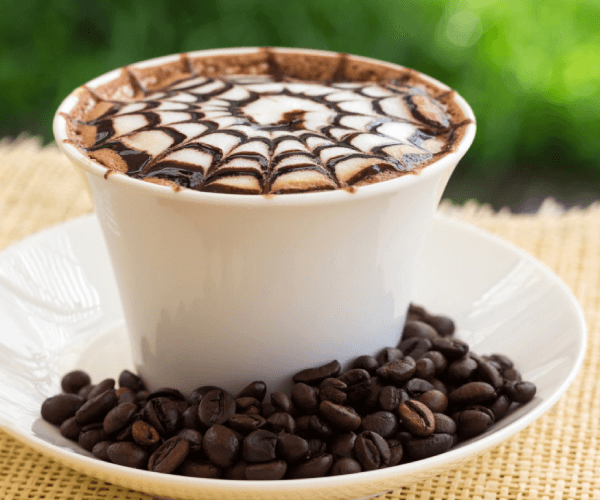Welcome to the aromatic world of coffee! We’ve made you a go-to resource for everything coffee-related. From the robust and bold flavors of an Italian Espresso to the light, fruity notes of Ethiopian Yirgacheffe, the spectrum of coffee is as diverse and exciting as it is flavorful. As you embark on this caffeinated journey, you’ll not only discover the unique characteristics of different coffee types but also the best ways to savor each brew. Whether you’re a casual drinker or a dedicated connoisseur, this guide will deepen your appreciation for the complexity and richness of your morning cup. Get ready to indulge your senses, elevate your coffee rituals, and explore the fascinating universe of coffee.
History of Coffee
Coffee has a long and vibrant history. Legend has it that coffee was discovered by an Ethiopian goat herder named Kaldi in the 9th century. He noticed that his goats became unusually energetic after eating the red berries from a certain tree. Intrigued, Kaldi shared his findings with a local monk, who then made a drink with the berries and found that it kept him awake during the long hours of evening prayer. Thus, coffee was born.
Over the centuries, coffee spread across the Middle East, through Europe, and into the New World. It was cultivated extensively in the Arab world during the 14th century, where it was consumed in public coffee houses known as qahveh khaneh. These coffee houses quickly became social hubs, where people gathered to drink coffee, engage in conversation, listen to music, play chess, and keep updated on the latest news.
The popularity of coffee continued to grow. By the 17th century, it had made its way to Europe, where it replaced the common breakfast drinks of the time – beer and wine. Those who switched to coffee noticed that it helped them to wake up and sharpen their focus. Coffee houses began to pop up across Europe and they became centers of social activity and communication. Today, coffee is enjoyed worldwide and is a major commodity on the global market.
The Process of Coffee Making
The process of making coffee is a complex one and involves several steps.
The first step is the cultivation of coffee plants. This is a labor-intensive process that requires careful attention to the environment in which the plants are grown.
Once the coffee cherries are ripe, they are harvested either by hand or by machine. After harvesting, the cherries are processed to extract the coffee beans. This can be done by either a dry method, where the cherries are spread out in the sun to dry, or a wet method, where the cherries are soaked in water to remove the fruit and pulp.
After the beans have been extracted, they are dried and then sorted by size and weight. They are then roasted, which is where the real flavor development occurs. The roasting process transforms the green coffee beans into the aromatic brown beans that we are familiar with. The beans are then ground and brewed to make the final product – a delicious cup of coffee.
Distinguishing Different Types of Coffee Beans
Understanding the different types of coffee beans can help you appreciate the diversity of flavors and aromas in coffee. There are two main types of coffee beans: Arabica and Robusta.
-
Arabica
Arabica beans are oval in shape and have a curved crease on one side. They are generally greenish to yellow in color. The flavor of Arabica coffee is often described as smooth, mild, and slightly sweet, with a hint of acidity.
-
Robusta
Robusta beans, on the other hand, are rounder and smaller than Arabica beans, with a straight crease. They are typically a pale green to brown color. The flavor of Robusta coffee is strong, full-bodied, and somewhat bitter, with a higher caffeine content.
It’s worth noting that the flavor of coffee can also be influenced by the region in which it’s grown. For example, coffee from Ethiopia, the birthplace of coffee, is often described as having bright, fruity flavors, while coffee from Colombia is known for its smooth, balanced, and nutty flavor.
A Guide to Different Types of Coffee Drinks
There are countless ways to enjoy coffee, with a variety of coffee drinks that cater to different tastes. Here are a few of the most popular coffee drinks:
-
Espresso:
This is a strong, concentrated form of coffee that is served in small amounts. It’s made by forcing hot water under high pressure through finely-ground coffee beans. The result is a dense, rich coffee with a layer of crema on top.
-
Americano:
This is simply an espresso diluted with hot water. It was reportedly invented during World War II when American soldiers stationed in Italy would add water to their espresso to mimic the coffee they were used to back home.
-
Cappuccino:
This is a popular Italian coffee drink that consists of equal parts of espresso, steamed milk, and milk foam. The foam on top is often sprinkled with cocoa or cinnamon.
-
Latte:
This is similar to a cappuccino but with more steamed milk and less foam. It’s often served in a tall glass and can be flavored with syrups like vanilla, caramel, or hazelnut.
-
Mocha:
This is a chocolate-flavored variant of a latte. It’s made by adding hot chocolate or chocolate syrup to a latte.
There’s a vast world of coffee to explore, with flavors, aromas, and experiences as diverse as the regions they come from. Whether you prefer the bold intensity of an espresso or the creamy decadence of a latte, there’s a coffee drink out there for you. So go ahead, indulge your senses, and savor the brew!
How to Brew the Perfect Cup of Coffee at Home
Brewing the perfect cup of coffee at home is an art that requires patience, precision, and practice. The first step to brewing perfection is selecting the right beans. The type of bean you choose will significantly impact the flavor of your coffee. While Arabica beans are known for their sweet, delicate flavor and low acidity, Robusta beans have a stronger, more bitter taste and higher caffeine content. Your choice will depend on your personal preference.
The next step is grinding the beans just before brewing. The grind size should match your brewing method. For instance, a coarse grind is ideal for French press, while a fine grind suits espresso. The freshness of the grind can significantly impact the taste, as coffee grounds begin to lose flavor as soon as they’re exposed to air.
The brewing process itself is where the magic happens. There are several brewing methods, each producing a distinct flavor profile. The French press method emphasizes the coffee’s body and flavor, the drip method results in a clean, rounded cup, and the espresso method yields a strong, concentrated shot. The water temperature, brew time, and coffee-to-water ratio are crucial elements to control during brewing to achieve the desired taste.
The Culture of Coffee Around the World
Coffee culture varies greatly around the world, reflecting each region’s unique history and traditions. In Italy, for instance, coffee is typically enjoyed in small, strong doses like espresso, often consumed standing at a bar. Italians also follow a ‘no cappuccino after 11 am’ rule, as they believe milk hampers digestion.
In contrast, coffee in the USA is typically consumed in large quantities, with ‘drip coffee’ being the most popular method. The ‘coffee to go’ culture is prevalent, with many Americans grabbing their coffee on their way to work. Specialty coffee culture has also gained momentum, with third-wave coffee shops focusing on high-quality beans and artisan brewing methods.
Ethiopia, often considered the birthplace of coffee, has a rich coffee tradition. The Ethiopian coffee ceremony is a slow, ritualistic process involving the roasting and grinding of coffee beans and the brewing of coffee in a ‘jebena’ or clay pot. The coffee is then served in small cups, with the ceremony often repeated three times a day.
The Health Benefits and Risks of Coffee
Coffee is more than just a beverage; it’s a source of antioxidants and linked to a range of health benefits. Research suggests that coffee may lower the risk of several diseases, including Type 2 diabetes, Parkinson’s disease, and liver diseases. It can boost physical performance, burn fat, and enhance brain function. It’s also known to alleviate mood, fight depression, and lower the risk of stroke.
However, it’s also essential to consider the risks associated with excessive coffee consumption. High doses of caffeine can lead to insomnia, restlessness, heart palpitations, and digestive problems. It can also cause addiction, with withdrawal symptoms like headaches, irritability, and fatigue. Pregnant women and those with certain health conditions, like high blood pressure, should also limit their coffee intake.
While coffee can be part of a healthy diet, it’s important to consume it in moderation. And remember, the healthiest coffee is black coffee. Adding sugar, cream, or flavored syrups can turn your coffee into a calorie bomb.
Conclusion
Coffee is a fascinating and diverse world, filled with a multitude of flavors, aromas, and traditions. By understanding the different types of coffee, the factors that influence their flavor, and the ways in which they can be appreciated, you can elevate your coffee experience. Remember to savor each sip, explore different coffee types and brewing methods, and respect the deep-rooted coffee cultures around the world. Whether you’re a casual coffee drinker or a devoted connoisseur, there’s always something new to discover in the world of coffee. So, keep exploring, keep tasting, and keep savoring the brew!

